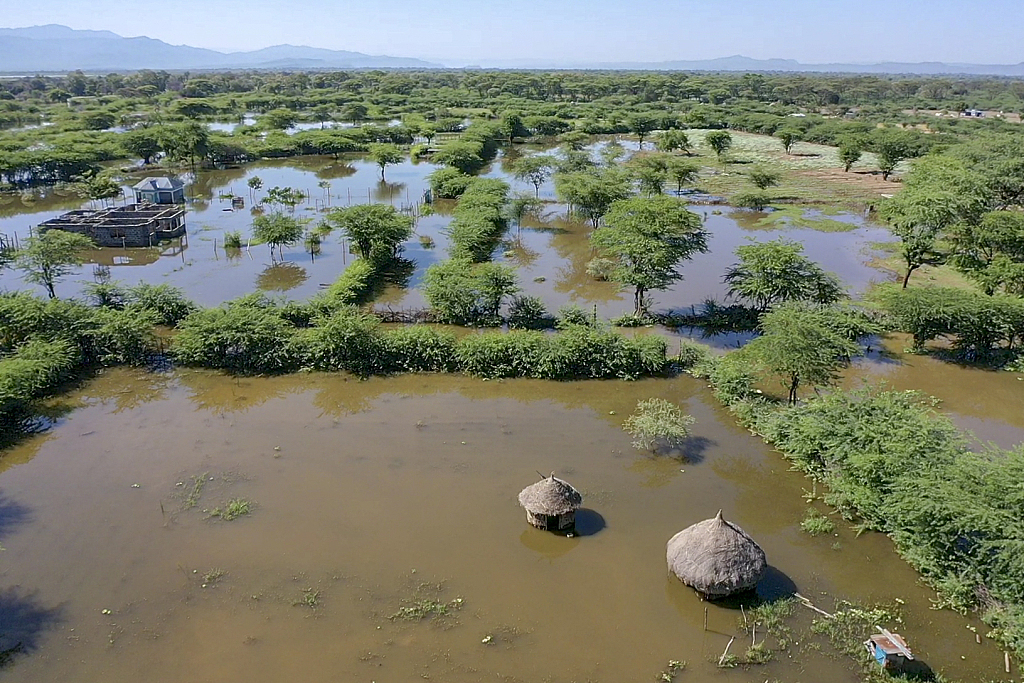Kenyan authorities have urged rural communities to make preparations in advance of heavy rains brought by El Niño, a global climate phenomenon causing higher-than-usual rainfalls and triggering flooding in East African countries.
With flooding imminent, residents in western Kenya have been asked to relocate. In the region's Nyando village, some villagers have been building temporary structures on higher ground, whose lands have already flooded since rains set in late last month, resulting in heavy economic costs.
"When it (heavy rain) comes, our people are dislocated. They lose homes, they lose utensils, they lose even the animals. So, most of our properties are lost in the floods," said Fanuel Origa, a resident of the village.
The Kenya Meteorological Department in early October issued a warning about heavy rains across the country in the next three months. The flood-prone Nyando has been identified as a potential hotspot for the downpours, and villagers are putting escape plans in place.
"We have people with boats ready to ferry villagers when heavy floods set in. Once you are out of the flood area, then you look for a place to stay," said Judith Akinyi, a local resident.
The Kenya Red Cross has been conducting public awareness campaigns in the region to educate the public about the signs of danger.
Kenya's minister for Lands, Housing, and Urban Development, Alice Wahome said that the government's priority now is investing in disaster preparedness to mitigate impacts, save resources, and protect development progress.
"We will be in a better place to stop, not to react, to stop or mitigate because El Niño will come but we can reduce the negative impact," said Wahome.

Floods inundate houses and roads in the Rift Valley, Kenya, October 20, 2020. /CFP
Floods inundate houses and roads in the Rift Valley, Kenya, October 20, 2020. /CFP
The rains are coming after the Horn of Africa experienced the longest drought in recent history. The prolonged dry spell decimated vegetation in the North Eastern Province, the North Rift Valley and coastal regions of Kenya. But now the meteorological department warns that these regions could experience El Niño rains.
"It may not be as equal in strength and force like it was in 1997, the last El Niño reported, but it will still be above the normal. So, we will have excess water," Wahome said.
She added that the government is looking at how to harvest water in some of the flood-prone regions.
Meanwhile, across Kenya, county governments have been tasked with the responsibility of mitigating the impact of El Niño in cities, towns and villages.
"The cabinet committee approved 30 million euros ($31.58 million) for us to get from the World Bank for lower Nzoia. Nzoia is one of the hotspots for flooding, especially with the coming of El Niño. We are halfway (done) working with the canals," she said.